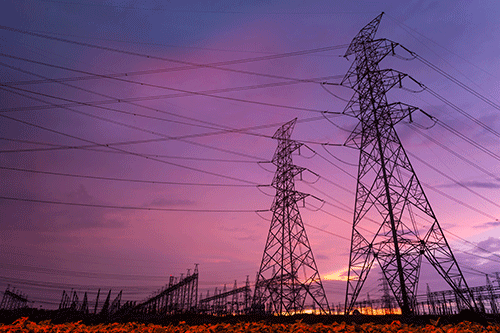Tough times are predicted for electricity consumers as Namibians need to prepare to face an expected double-digit electricity hike.
This will leave consumers no choice but to fork out more of their hard-earned dollars just to keep the lights on, as demand begins its annual uptick towards the chilly winter months.
“We anticipate a double-digit increase next year in electricity tariffs for the coming years, driven by Namibia Power Corporation (NamPower) under-recoveries that have built up over the previous periods,” said Robert Kahimise, chief executive officer of the Electricity Control Board (ECB).
He was speaking last week during a media briefing in response to NamPower’s bulk tariff application for the 1 July 2024 to end June 2025 financial period.
Kahimise stated that the ECB resolved to adjust the NamPower bulk tariff to 8%.
This adjustment changes the average tariff from the current approved rate of N$1.9856 to N$2.1444 per kilowatt hour (kWh) for 2024/2025.
For 2025/26, the ECB expects an average bulk tariff of N$2.4512, for 2026/27 to increase to N$2.6733, 2027/28 to N$2.7747 and for 2028/29 to N$2.9066.
Pinehas Mutota, ECB’s executive of economic and markets regulation, noted that it is expected that the tariff adjustment will put further pressure on future inflation, and therefore on prices of goods and services.
This is because the electricity cost is part of the inflation calculation.
What is more is that the latest tariff increase of 8% is above the current inflation rate of 4.5% (as at March 2024).
This increase will add significant pressure to already-depressed pockets for consumers who have endured sharp increases in fuel and food prices in recent weeks and months.
These increases have been exacerbated by the long-lasting effects of Covid-19, and persistent supply-line constraints.
The power tariff increases mean regional electricity distributors (REDs), local authorities and large power users like mines, which buy electricity directly from NamPower, will pay more for electricity.
These increases will inevitably be passed on to local consumers.
The ECB in 2022 announced an increase in bulk electricity tariffs of 7.30% from N$1.6982 to N$1.8222 per kilowatt hour (kWh) for the 2022/23 period.
The approved increase followed a tariff decrease in 2019/20.
No tariff increases were effected for 2020/21, with an increase of 2.29% in 2021/22.
NamPower initially submitted a tariff application for an effective bulk tariff increase of 14.59% for both generation and transmission tariff before the ECB toned it down to the 8% increase.
The primary factor driving this tariff is the rise in the cost of electricity generation, particularly the expense associated with imported electricity.
Namibia currently imports over 60%, which remains an ongoing concern.
Generation capacity
At the same event, ECB’s executive for technical regulation Petrus Johannes said it is projected that 45% of the national demand will be supplied by local generation for the 2024/2025 period, with the remaining 55% to be met with regional imports.
“The Ruacana Hydro-Power Plant stands as the primary source of our local generation. However, its performance is dependent on water flow of the Kunene River. Currently, it is reported that the water flow at Ruacana is promising – and for the period 2023/2024, it is anticipated that Ruacana will generate as expected. It is our belief that the situation will continue in the medium to long-term,” he stated.
Moreover, Mutota noted there are four operational domestic solar PV plants with a combined installed capacity of 40MW established under the modified single buyer market model.
It is anticipated that another 50MW will be commissioned during 2024/2025, meaning more electricity will be generated locally.
This will marginally reduce Namibia’s need to import electricity.
“It is anticipated that there will be more independent power producers operating on bilateral agreements with contestable customers, including export into the Southern Africa Power Pool,” he added.
Local energy economist David Jarrett said government should start thinking of new ways to reduce electricity tariffs in future.
He stressed that electricity increases are substantial and significant to consumers, as they are already facing many recent price hikes.
Furthermore, a joint report between committees of natural resources and economics, as well as public administration, recently tabled in the National Assembly stated that there is a need to maximise and optimise the Ruacana power plant to reduce electricity tariffs.
“Instead of exporting uranium, there is a need for a storage facility to pile it up until such a time that it can be used within the country. We should consider establishing a nuclear power plant to produce electricity. There have been offers from other countries to help Namibia establish nuclear plants,” the parliamentary report recommends.
It adds that the mines ministry and NamPower should prioritise completing crucial energy projects, such as Kudu Gas to Power, to ensure Namibia’s self-reliance, as well as to mitigate power shortages.
It has also been proposed that Namibia should invest in power storage facilities, and manufacture storage batteries for solar energy. -mndjavera@nepc.com.na


